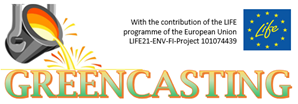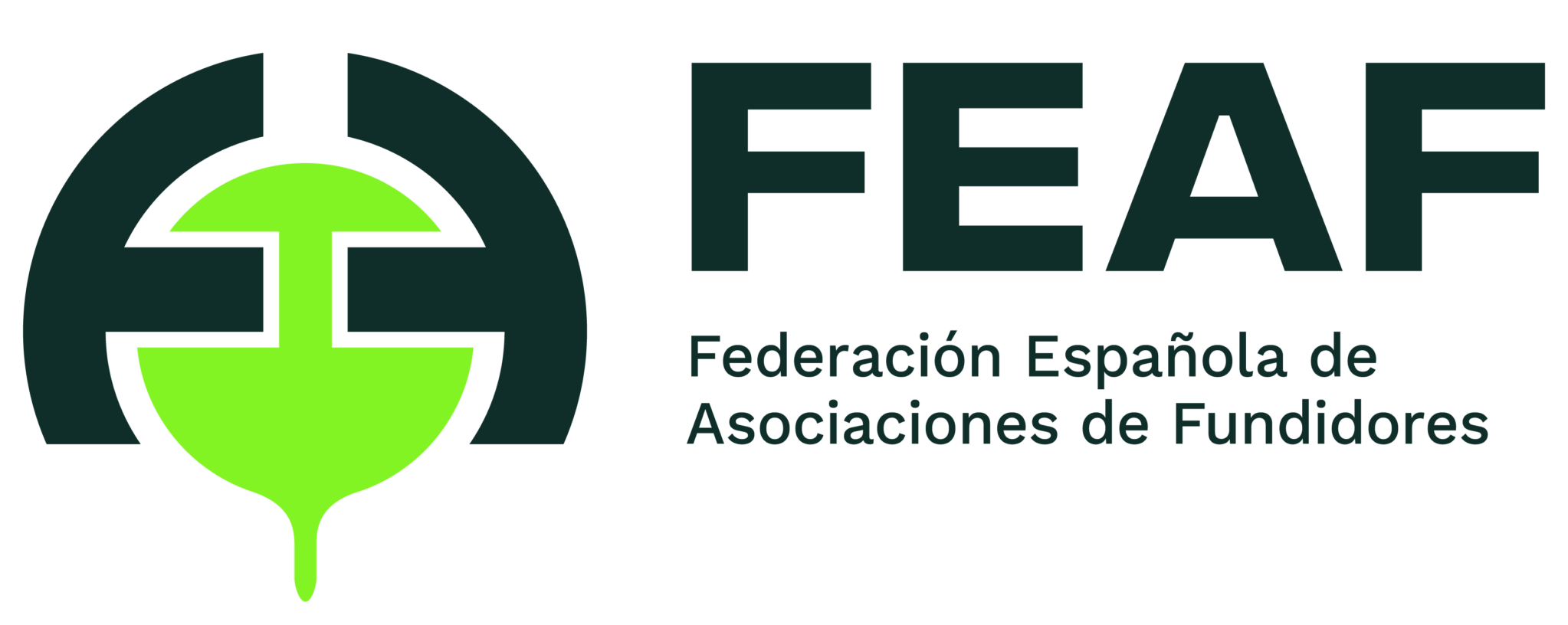GREEN CASTING LIFE project
Towards zero emissions in European ferrous foundries using inorganic binder systems
The LIFE project 6 European flagship ferrous foundries will implement at industrial scale the inorganic binder system on their production process implying major changes, starting with selection of the suitable inorganic binder system, changes in processes and investments in new equipment. In parallel different sand reclamation methods will be demonstrated. Based on the results obtained, the foreseen techniques will present an outstanding knowledge for BAT technologies participating to tackle environmental problems and to produce greener products to European market.
“Co-funded by the European Union. Views and opinions expressed are however those of the author(s) only and do not necessarily reflect those of the European Union or CINEA. Neither the European Union nor the granting authority can be held responsible for them.”
Objective
- To successfully use inorganic binder systems on an industrial scale in 6 flagship ferrous foundries, including necessary equipment investments, in five European countries.
- To develop tailor-made inorganic binder systems solutions for iron and steel foundries, in cooperation with the flagship foundries.
- To demonstrate different type of sand reclamation methods for inorganic binder system sands (thermal, mechanical and wet methods).
- To enhance the replication potential by
- contacting 200 and interviewing 100 potential ferrous foundries.
- guiding and testing inorganic binders in 15 selected follower pilot foundries in Europe.
- providing new results and experiences for the preparation of the Reference Document on Best Available Techniques in the Smitheries and Foundries Industry (BREF document).
- To ensure an efficient communication and dissemination of the project activities.
- To arrange training workshops in six partner countries for potential follower pilot foundries and other relevant stakeholders.
Expected Results
- Experiences and know-how from six flagship foundries for implementing inorganic binders in their production.
- Step-by-step implementation plans for flagship foundries for the full-scale implementation of inorganic binders.
- Emission reductions after changing from organic binder systems to inorganic binder systems:
- To reduce total hazardous airborne emissions by 80-95% (VOC, SO2, NOx, Particulate Matters…) in the production lines using inorganic binders compared.
- To create a healthier environment for the workers by improving indoor air quality in foundries by 70 (CO, VOC, PM, formaldehyde, phenols…).
- To reduce the harmful substances in waste sand by 80-90% (DOC, phenols, fluoride, BTEX concentrations)
- To decrease the amount of waste sand to be landfilled by 90% in the partner foundries.
- After 5 years from the end of the project 300 ferrous foundries in EU are expected to change from current organic to inorganic binder systems.
Date
01/09/2022Number
LIFE21-ENV-FI-101074439Coordinator

Meehanite Technology Oy (Sara Tapola; +358 40 5518761; sara.tapola@ains.fi)
Budget
7.162.398 €. EU contribution (60%): 4.297.432 €Duration
09/2022 - 02/2026Socios
- A-Insinöörit Teollisuus- ja talotekniikka Oy (FI)
- AFV – Asociación de Fundidores del País Vasco y Navarra (ES)
- AGH University of Science and Technology (PL)
- Universitá degli Studi di Perugia (IT)
- Peak Deutschland GmbH (DE)
- Spolka Akcyjna Odlewnie Polskie (PL)
- Fundación Azterlan (ES)
- Voestalpine Railway Systems JEZ SL (ES)
- Foundryteam Oy (FI)
- Sand Team, spol s.r.o (CZ)
- Peiron Oy (FI)
- Metallurgia Madrilèna S.A. (ES)
- Valumehaanika AS (EE)
- F.A. Engineering srl (IT)
- Centre Technique des Industries Mécaniques (FR)
Funding

“Funded by the European Union. Views and opinions expressed are however those of the author(s) only and do not necessarily reflect those of the European Union or CINEA. Neither the European Union nor the granting authority can be held responsible for them.”

